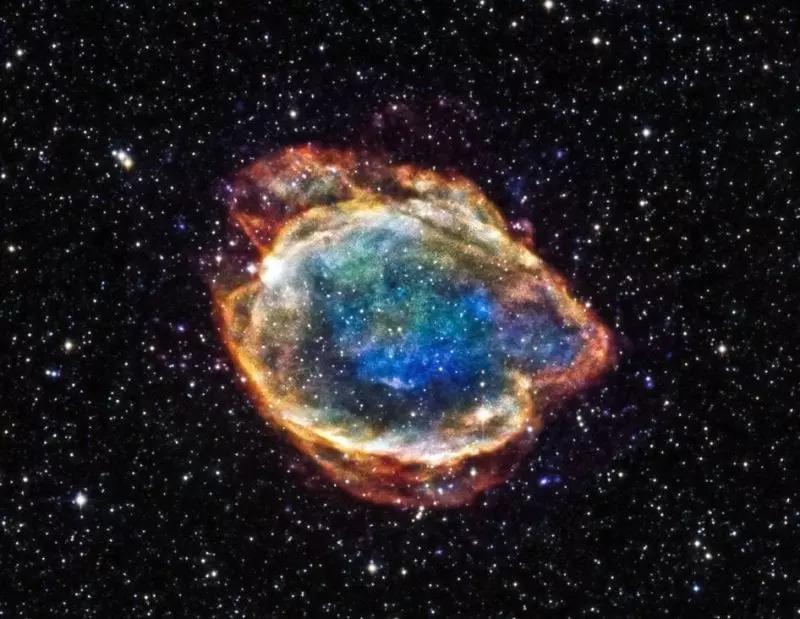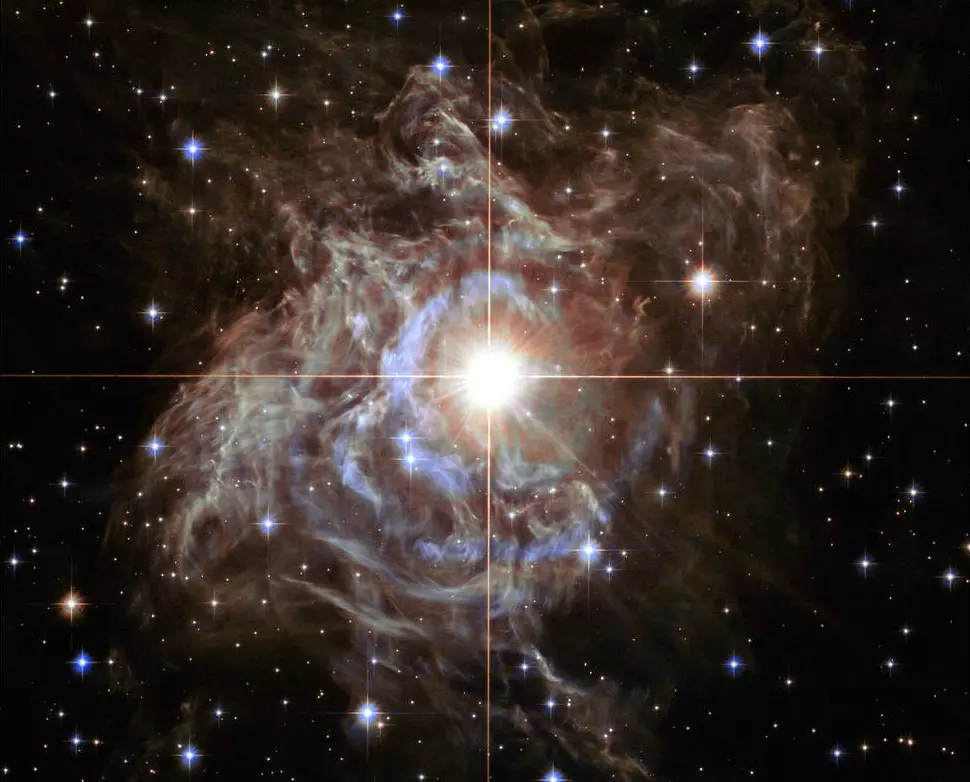[Originally published as 68% of the Universe May Not Exist!]
Unsuspecting students are often taught “facts” that are anything but actual facts. Consider, for example, what NASA says about the nature of the universe:
It turns out that roughly 68% of the universe is dark energy. Dark matter makes up about 27%. The rest – everything on Earth, everything ever observed with all of our instruments, all normal matter – adds up to less than 5% of the universe. Come to think of it, maybe it shouldn’t be called “normal” matter at all, since it is such a small fraction of the universe.
What is this thing called “dark energy” that supposedly makes up more than half of the universe? NASA honestly says that no one has any idea. However, NASA assures students that we know that 68% of the universe is made up of it.
Of course, what NASA (and most astrophysicists) neglect to tell students is that the entire existence of dark energy, including its amount in the universe, is based on a myriad of assumptions, some of which are almost certainly not true. Nevertheless, they assure students that they know dark energy exists and that most of the universe is made up of it. The cold, hard truth, however, is that everything we know about dark energy is based on models, and those models are built on assumptions. If the assumptions are wrong, the models could be wrong, and if the models are wrong, the whole idea of dark energy could be wrong.
This issue was brought front and center with the recent publication of a paper that challenges one of the assumptions that is instrumental in the conclusion that dark energy exists. If the results of this paper are confirmed, dark energy will be thrown into the same trash bin as phlogiston, luminiferous ether, and the impossibility of quasicrystals.
To understand the research, you must first understand how we measure distances in the universe. Because the earth travels around the sun, it sees the universe from different perspectives. If you look at several stars at one time of the year, for example, and then look at them six months later, you will see that their relative positions are slightly different. This is called stellar parallax, and it is caused by the fact that you are looking at those stars from a different position than you were six months ago.
Using some basic geometric arguments, you can use the observed change in relative positions to measure how far the stars are from the earth. This is a very reliable method for measuring the distance to a star, but the farther the star is from us, the harder it is to see its relative position change. The best telescope we have for this method can measure distances to about 3,000 light years from earth. That is all.
Of course, the universe is much bigger than that, so we have to find some other way to measure longer distances. Within 3,000 light years of earth, there are some stars whose brightness varies on a periodic basis. We can measure the distance to them using parallax, and we can then use that distance to convert the brightness that we see to the actual brightness of the star (the brightness we would see if we were right next to the star).
Based on many such observations, there is a class of variable stars, called Cepheids, whose actual brightness is dependent on the frequency with which they vary. Assuming that relationship holds throughout the universe, we can look at Cepheids that are farther than 3,000 light years from earth and measure their period to get their actual brightness. We can use that actual brightness and the brightness that we see to determine how far away they are.
Assuming the actual brightness we calculate is correct, the distance we determine is once again based solely on geometry.
Cepheids are called “standard candles,” because we think we can determine how bright they actually are and the use that brightness to determine how far away they are. The problem is that it gets harder to see Cepheids the farther you look from earth. As a result, we use different standard candles—type 1A supernovae—to measure very large distances. We assume that we can use them because where type 1A supernovae and Cepheids overlap, we seem to be able to predict the actual brightness of the supernovae correctly.
What does this have to do with dark energy?
When we observe distant stars, we assume that the light that is coming from them is old, since the light had to travel from the star to get to us. If the star is 1,000 light years away, we assume the light is 1,000 years old. If the star is 1 million light years away, we assume the light is 1 million years old.
Well…when we look at supernovae that are very far (billions of light years) away, they seem to be traveling more slowly than the stars that are “only” millions of light years away. Assuming the distance is also a measure of the time when the light left the star, we conclude that the universe was expanding more slowly billions of years ago than it was millions of years ago. In other words, the expansion of the universe is speeding up over time.
This doesn’t make sense if gravity is controlling the expansion of the universe, because gravity should be attracting all matter, which would slow down the expansion.
Thus, the concept of dark energy was born.
Dark energy is the mysterious “stuff” of the universe that pushes things apart. This mysterious stuff is stronger than gravity (at least over the whole of the universe), and that “explains” why the expansion of the universe is speeding up. The 68% comes from forcing the concept of dark energy into the standard cosmological model (the big bang) and then seeing how much is necessary to make the model consistent with the observed data.
Here’s the problem.
The study I linked earlier has uncovered some data that indicate we have been calculating the brightness of type 1A supernovae wrongly. When the authors of the study use that data to “correct” those standard candles, they find that there is no need to assume the universe’s expansion is speeding up. In fact, they state that what they have found
…would inevitably cause a serious systematic bias with look-back time. Notably, taken at face values, most of the Hubble residual used in the discovery of the dark energy appears to be affected by the luminosity evolution.
In other words, their conclusion that type 1A supernovae brightness has been calculated incorrectly causes a systematic problem with determining how far away the supernovae are, which causes a problem with measuring the speed of the universe’s expansion. If what they have discovered is taken into account, there is no need to assume that the universe’s expansion is speeding up, and therefore there is no need for dark energy to exist.
Of course, using type 1A supernovae as standard candles is only one of a myriad of assumptions necessary to conclude that 68% of the universe is made of dark energy. Indeed, even the idea that light which comes from a billion light years away is a billion years old is based on an assumption. It assumes that the universe is pretty much the same everywhere, and we are fairly certain that’s not true.
Nevertheless, unsuspecting students are constantly being told that 68% of the universe is dark energy, and they are not given the slightest inkling that there could possibly be anything wrong with that number. That’s the problem we have with science education these days. The scientific dogma of the day is preached as fact, even when it is based on a long list of faulty assumptions.
Now please understand that I am not saying dark energy doesn’t exist, even though I am very skeptical that it does.
This one study cannot determine that. Indeed, there are already those who think the study itself is flawed. My point is simply that the very existence of this study demonstrates that “68% of the universe is dark energy” is not a fact, and it therefore should not be taught as such. Certainly it should be taught, since it is the reigning dogma of the day. However, honest scientists should indicate that the concept is built on a long list of assumptions, some of which are questionable, to say the least!







